Cnoc an Tearmainn, or Sanctuary Hill, commands a clear view on a fine day of the most westerly light on the Co Mayo coastline. An Túr, as the mid-19th-century Blackrock lighthouse is known in the Erris Gaeltacht, is one of four such beacons built to warn shipping of navigational hazards off the western promontory.
As the Wild Atlantic Way wends south to the tip of the Mullet peninsula a necklace of islands and outcrops are a magnet for geologists, archaeologists and ornithologists. Corncrakes can still be heard near Blacksod, and terns nest and seals bask on the Inishkea islands; Inishglora, to the north, is associated with the Children of Lir.
But the activity visible from Cnoc an Tearmainn out to sea has had a very sad and specific focus for the past five days.
Like their colleagues in the three other Irish Coast Guard bases, at Shannon, Sligo and Waterford, the crew of the Dublin-based Sikorsky S-92 air-sea rescue helicopter would have known almost every indent on this part of the 7,800km Atlantic rim.
It's not just about the flying. You wouldn't do this job if you didn't love it
Coastal navigation is an integral part of the training for the rescue pilots and winch teams who respond to emergencies every day and night of the year.
“But it’s not just about the flying. You wouldn’t do this job if you didn’t love it – even though there are hours of boredom, moments of terror,” one helicopter winchman told this reporter some years ago.
We have the most incredibly beautiful seascape, inhabited by special people – even if you are meeting them on a dark night under stress or injury, or on a heaving deck at the end of a wire.
Rescue 116, the Dublin-based Irish Coast Guard helicopter crew, wouldn’t have expected to meet anyone, special or otherwise, when asked by Malin Coast Guard station to provide top cover, or safety and communication support, for Rescue 118, its Sligo-based counterpart, on Monday night.
The mission involved support for a medical evacuation about 250km west of the Mayo coast. A crew member on a British-registered fishing vessel was reported to have injured his hand while working on the blue whiting grounds.
Malin initially asked for help from the Air Corps’ fixed-wing Casa aircraft, a fishery-protection plane equipped with avionics, which has supported Irish Coast Guard helicopters many times. The request was refused because of a shortage of personnel outside “normal hours”. The second option was to request support from another helicopter.
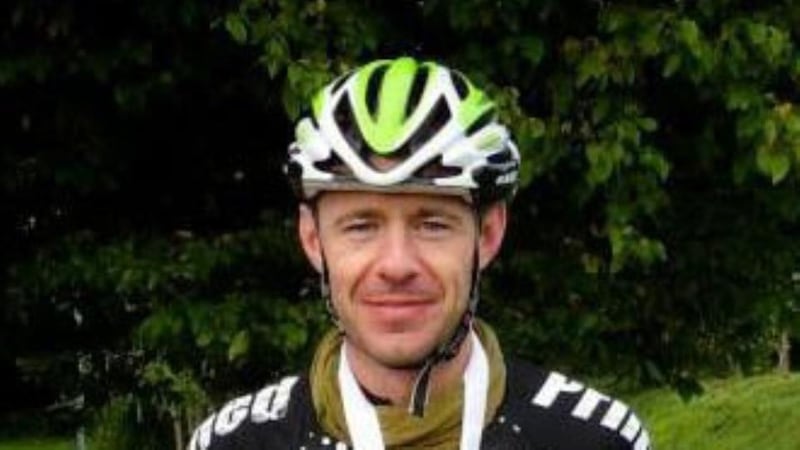
Senior pilot Capt Dara Fitzpatrick, Capt Mark Duffy, winch operator Paul Ormsby and winchman Ciaran Smith prepared for the cross-country flight from Dublin, which would involve refuelling at Blacksod lighthouse, in north Mayo.
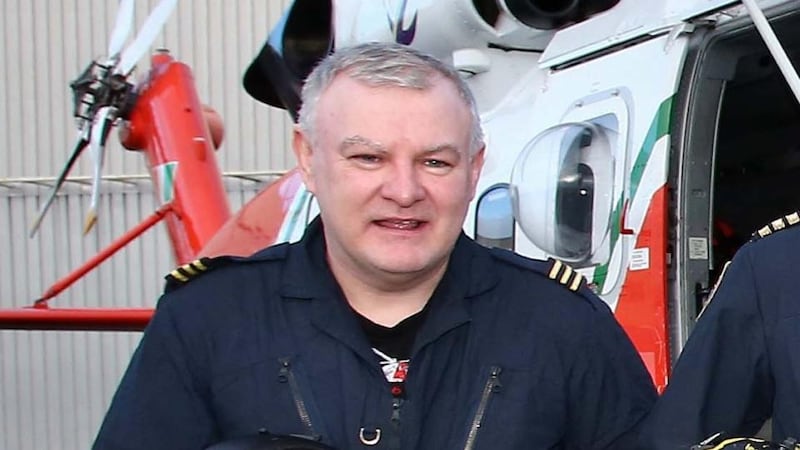
The aircraft’s last communication, at 12.45am on Tuesday, was that it was preparing to land at Blacksod. Its principal lightkeeper, Vincent Sweeney, his son Simon and his nephew Fergus have participated in many such refuellings on the lighthouse helipad. But Rescue 116 never arrived.
As the Sligo helicopter returned with the injured fisherman it was reported to have spotted wreckage about 2.5km southeast of Blackrock lighthouse.
At about 1.30am bleepers attached to the Irish Coast Guard’s Ballyglass unit activated. It was, as one of the volunteers said, “the call you dreaded, you never wanted to take”.
Several hours later it was confirmed that a casualty in a critical condition had been picked up, thanks to strobe lights on an immersion suit, and taken from the water by the RNLI’s Achill lifeboat.
The casualty was Capt Dara Fitzpatrick. She was transferred to a Shannon helicopter.
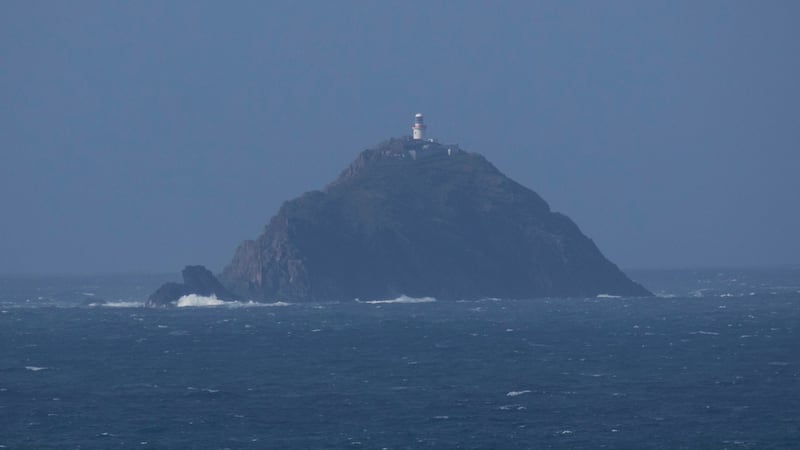
The life of a Coast Guard pilot is a dangerous one, bringing great rewards but also great risks. The crews of the service are a very close community.
One of the pilots on the Shannon helicopter was Carmel Kirby, Fitzpatrick’s close friend, who had made Irish aviation history with her in August 2013 when they flew the first all-woman Irish Coast Guard mission.
Kirby, from Renmore in Galway, was the first woman pilot at the Shannon search-and-rescue base; she has saved many lives.
One particularly challenging mission occurred in the early hours of December 9th, 1993, when three Spanish fishing vessels were reported to be in difficulty off the west coast in a storm.
Kirby was copilot on the Sikorsky S-61 dispatched by the Marine Rescue Co-ordination Centre, flying with pilot Nick Gribble. Winch crew of Peter Leonard and Kirby’s partner John McDermott were on board. A Royal Air Force Nimrod provided top cover.
Capt Liam Kirwan, then head of what was the Irish Marine Emergency Service, had an instinct to request additional help from the Air Corps and RAF. His instinct was sound. The sea around the Spanish vessel Dunboy resembled "the set for the film The Perfect Storm", McDermott said afterwards.
McDermott was lowered on to a heaving deck from the helicopter, as the vessel was listing 70 degrees. As he prepared to winch off the 13 crew the cable broke, rebounded, knocked winch operator Peter Leonard into the back of the helicopter cabin and sliced into four of the five rotor blades. Kirby issued a Mayday alert, as she believed the helicopter was going to ditch.
McDermott saw the aircraft fly away and then vanish. He had no radio, was stuck on a vessel with no power, and feared the worst for his rescue crew.
Standing in a wheelhouse with windows smashed and metalwork bent by the force of the sea, the skipper was “pretty calm” and told him that the vessel wouldn’t sink.
Another Spanish vessel approached within 500m and, in what McDermott described as one of the finest acts of seamanship he had ever seen, threw over a hand-held radio encased in bubble wrap. The winchman switched it on and picked up a signal: Rescue 51, the RAF Nimrod.
McDermott was able to call the RAF pilot, who reassured him that the Sikorsky, with his partner aboard, was 10 minutes from Galway. The city was in darkness because of power cuts.
As the hours passed on the powerless Dunboy one crewman showed McDermott photographs of his children. "It was a bit sobering," the winchman said.
The second fishing vessel stood by until day broke, the wind dropped and an RAF Sea King helicopter arrived.
It winched McDermott off, and the fishing vessel was towed into Killybegs, in Co Donegal. Earlier Kirby, Gribble and Leonard had managed to land safely at Galway airport.
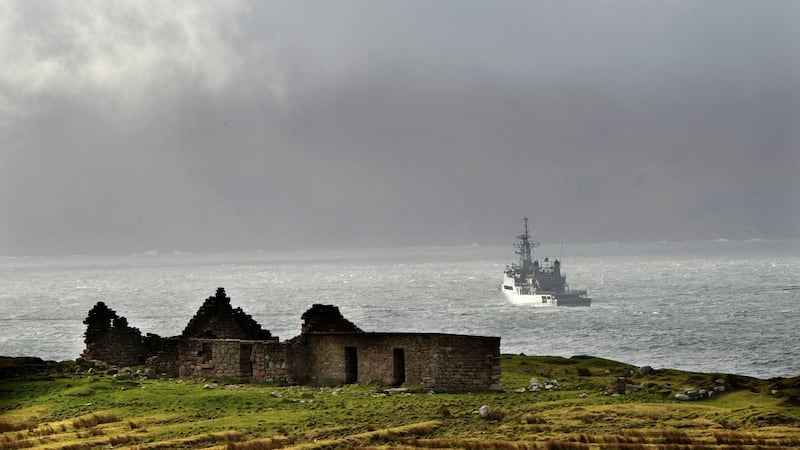
Throughout this week Carmel Kirby has been among the helicopter crews searching for their missing colleagues.
There have been other close connections. Bernard Lucas, an Irish Coast Guard volunteer in Doolin, whose wife and fellow Coast Guard member, Caitríona Lucas, died during a sea search off Co Clare last September, drove up to help comb the shoreline.
His wife had trained with Fitzpatrick and knew her well, he said. Among those who have extended sympathies has been the former Irish Coast Guard press officer Tom McLoughlin, who was so moved that he wrote a poem that he hopes to send to the bereaved families.
Jurgen Whyte, the Air Accident Investigation Unit’s chief aeronautical officer, also knew several of the Rescue 116 crew through his time with the Air Corps.
In March 1990 he was the Dauphin helicopter commander on duty at Finner Camp, in Co Donegal, when a 20m fishing vessel, the Locative, with four crew aboard, reported that it was taking in water off Arranmore island.
The seas were so high, and the vessel was rolling so much, that the helicopter risked being skewered by the boat’s mast, and the RNLI Arranmore lifeboat could not come alongside.
The helicopter had just 40 minutes of hovering time left when the pilot and winch operator remembered reading an account of how a lifeboat pulled a powerless vessel around to get a line aboard. The winchman, Daithí Ó Cearbhalláin, and winch operator, Ben Heron, snatched the crew off the heaving deck. The airmen and lifeboat crew received awards for their courage and skill.
The rescue community is a small, tight family
Just last weekend, however, many Irish Coast Guard, Air Corps, Naval Service and RNLI colleagues from around the coast attended the funeral in Co Clare of Ó Cearbhalláin, who had died, at the age of 52, after a short illness.
The loss of two of the Irish Coast Guard’s most experienced search-and-rescue professionals was noted by Gerard O’Flynn, the organisation’s operations manager, at Blacksod this week, when he confirmed that Fitzpatrick had been pronounced dead in hospital. "The rescue community is a small, tight family," he said, paying tribute to both.
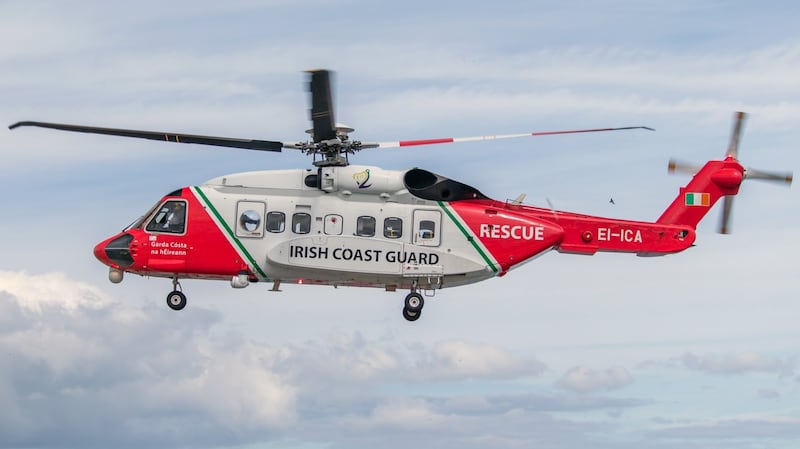
Capt Fitzpatrick was the mother of a three-year-old son, Fionn. She was a 16-year-old schoolgirl in Dublin when a Donegal community activist and fisherman’s wife, Joan McGinley, began a campaign to improve air-sea rescue services on the west coast.
A local fisherman, John Oglesby, from Owey island, had bled to death on the deck of his boat within sight of the Mayo coastline in 1988. His leg had been severed by a trawl warp after a sheave pin came loose.
The State was then heavily dependent for air-sea rescue on the British coastguard service and RAF. The nearest lifeboat station to the casualty then was on Arranmore, and the nearest helicopter rescue crew was at Casement Aerodrome, on the edge of Dublin.
The RAF calculated that Oglesby’s vessel would have reached shore before a helicopter from Scotland could make it.
Capt Liam Kirwan was appointed first director of the west-coast helicopter base with an Air Corps Dauphin crew at Shannon. He established the Marine Rescue Co-ordination Centre, as part of the Department of Marine in Dublin, and transformed a neglected network of volunteer-run coastal units that still used horse-drawn wagons, candles and breeches buoys into shore stations run by professionally trained volunteers.
It was not without considerable challenges. In October 1997 the diver Michael Heffernan died after volunteering to help in a cave rescue. The “mammoth undertaking” on that occasion, as Garda superintendent Tony McNamara, the second coxswain of the RNLI’s Ballyglass lifeboat, described it, took place around the cliffs of Horse island in Erris, north of the location of this week’s emergency.
It involved professional and voluntary rescuers working together, with the courage of several Garda divers and the seamanship of several local fisherman proving crucial.
Several of the fishermen and gardaí from that event would later find themselves on opposing sides during the construction of the Corrib gas pipeline.
"Yet now we all forget our differences again when the situation demands it, because the community here is distraught," Gerry Coyle, a Fine Gael councillor, and John Gallagher, chairman of Comharchumann Forbartha Ionad Deirbhile – both supporters of the Shell gas project – said at Blacksod pier this week.
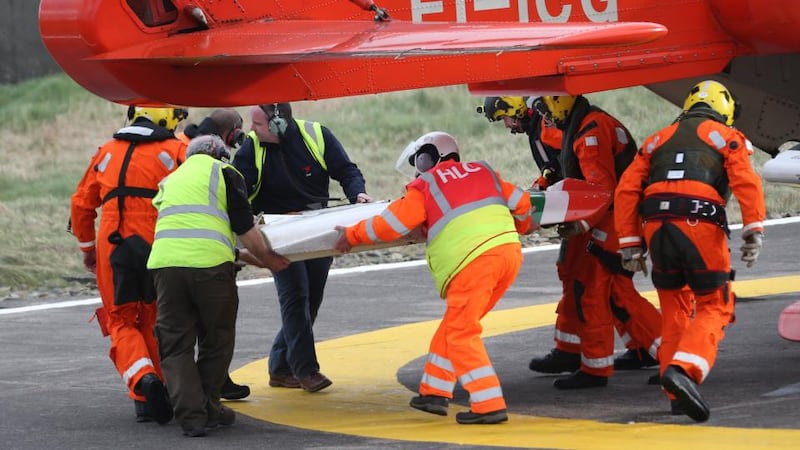
Minister for Transport Shane Ross, who met the families of the missing men in Blacksod, described their situation as unthinkable, unspeakable and unimaginable.
Families of fishermen such as the six crew on the Donegal vessel Carrickatine, lost off the northwest coast in November 1995, and the crew of the Pere Charles, which sank off the southeast coast in 2007, have painful experience of having to grieve with no sign of bodies.
More recently there was the harrowing experience of the families of the five fishermen who died in the sinking of the Tit Bonhomme, in west Cork on January 15th, 2012. After a month-long search that involved the sort of unrelenting and extensive community support offered in north Mayo this week, with volunteers travelling from all parts of the island to comb the shoreline, the bodies of the missing fishermen were found.
The crash will also have revived painful memories for the relatives of four Air Corps crew who died after their Dauphin crashed on its return from a night rescue mission off the Waterford coast in July 1999.
The final report of the investigation into the deaths of 30-year-old Capt Dave O’Flaherty, 28-year-old Capt Mick Baker, 34-year-old Sgt Paddy Mooney and 25-year-old Cpl Niall Byrne, which was released in September 2000, identified two active causes, six contributory causes and nine systemic causes for the crash.
While the main cause of that accident was collision with a sand dune after an unsuccessful approach to Tramore beach in extremely poor visibility, the report highlighted the absence of after-hours air-traffic control at Waterford airport.
An officers’ representative organisation said the report highlighted the great strain being placed on the Air Corps generally, with Dauphin crews obliged to provide ministerial air transport, security and other duties, as well as search and rescue. The four crew were awarded posthumous distinguished-service medals by the State, nine years after the crash.
They have made our islands a safer place for us to live in. They won't be forgotten
Dr Marion Broderick, an Aran island GP and lifeboat medical officer, who was a member of Joan McGinley’s original campaign, has not stopped thinking this week about the Rescue 116 and Tramore crews.
“The loss of the crew of Rescue 116 is felt by all of those who depend on them in our coastal and island communities, where many people are alive today because of their dedication and professionalism,” Broderick says.
“Our prayers and thoughts are with their families and their colleagues in the wider search-and-rescue family.
“They have made our islands a safer place for us to live in. They won’t be forgotten.”







